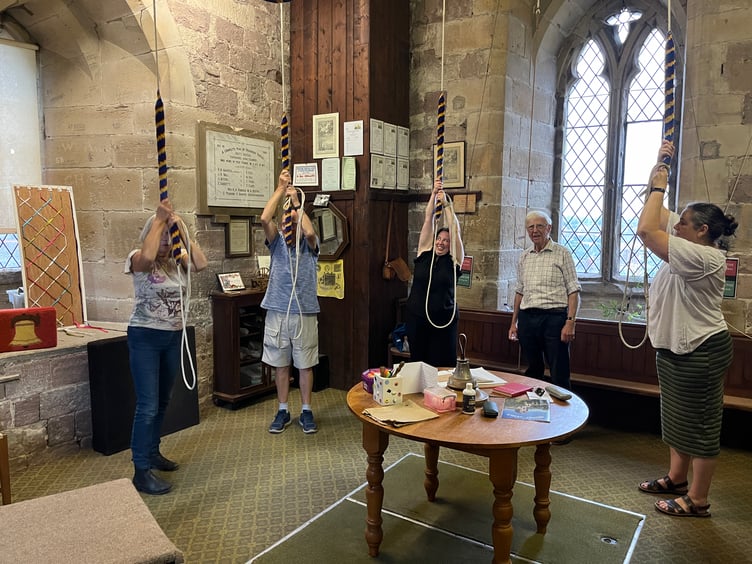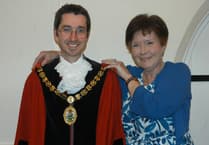OFTEN heard, but rarely seen: the bells of St Marys Church, Ross-on-Wye have rung out for centuries for church services, national events such as coronations and to signal peace at the end of wars.
The bells have rbeen heard since before mediaeval times to celebrate the life of the town and its inhabitants.
But have you ever wondered what goes on behind the stone walls of the tower that is such a beautiful landmark looking out across the town?
There have been bells of some sort in the tower from mediaeval times and before. However, the present ring of eight bells were cast between 1761-70 in Gloucester by Thomas Rudhall.
In 1721 the original 14th century spire had been replaced under the direction of John Kyrle to reach its present height of just over 60 metres. It is thought that he also had the four pinnacles added.
Despite needing some restoration over the years, because the old mediaeval oak beams could no longer take the strain, it now looks exactly as he envisioned it over 300 years ago.
Seven bells were then cast in 1761 and the tenor, the heaviest bell was donated by John Kyrle in 1695 and cast in 1770.
The lightest bell weighs 5cwt (imperial), 254kg (metric). The heaviest weighs 20cwt, 1016 kg (just over a metric tonne) and has a diameter of over a metre.
The clock and quarter chimes were given by parishioners in 1924, in memory of John Kyrle, to commemorate the bicentenary of his death.
Bells in England are rung quite differently to bells in Europe. The descending scale of our bells and the gaps between sounds are as quintessentially English as cricket and afternoon tea.
This is achieved by hanging the bell on a large wheel, which has to turn full circle and takes time to allow the clapper to hit the side of the bell. Some massive feat of engineering in a pre-technological age.
This ability to control when the bell sounds resulted in the development of change ringing: the bells change their order to create numerous different changes always ending in the familiar descending scale.
Ringing the bells requires time and practice to learn and master. First comes the skills of handling and ringing the bell and then comes the art of changing its position amongst the rest of the team, following multiple patterns which the ringers have to hold in their heads as they ring.

The bell ringers are following in the footsteps of many generations who have rung before them and the ringing room is decorated with ‘Peal Boards’ celebrating achievements of long lengths of change ringing in previous centuries. They are following an ancient art and sounding a musical instrument which is 250 years old!
Although, the technique is almost unchanged since the installation of the bells in the 18th century, there have been many changes in the ringers since that time.
Until well into the 20th Century it was strictly an occupation for men and there were strict rules for conduct with fines for bad ringing and poor attendance.
Fortunately, all of that has changed and now the campanologists consider themselves a friendly relaxed group with about 12 regular ringers who are often joined by ringers from local churches and occasional visitors from elsewhere.
However, the small team are always looking out for new recruits and if you are interested in joining them or would just like to see what we they do contact the parish office: [email protected].





Comments
This article has no comments yet. Be the first to leave a comment.